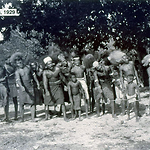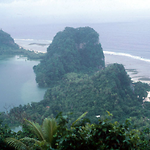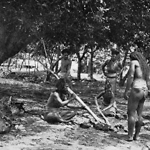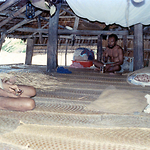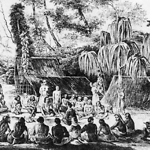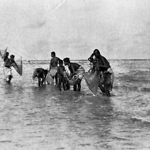Place: Tikopia Island
Details
Tikopia Island is an isolated, small but high (Mt. Reani reaches 380 metres) Polynesian outlier island in the far southeast of the Solomons.
The island is a remnant of an extinct volcano, and was first sighted by Europeans when Spanish explorer Quiros ventured there in 1606. Lake Te Roto fills the volcanic crater eighty metres deep. The largest village is Matautu on the west coast. There are four chiefs (Te Arikis) on the island, who also have influence on nearby Anuta and Fatutaka Islands. They are the heads of patrilineal clans and were (and are) treated with great respect; visitors have to crawl on hands and knees through the doors of their houses. Each chief has two sets of advisers, one for ritual affairs and one for secular affairs. There remains an intensive system of agriculture, Tikopians practiced strict population control, and tied agricultural and livestock control to population numbers. At the beginning of the seventeenth century all the island's pigs were slaughtered and fishing substituted as a source of protein because the pigs consumed too much food. Traditional houses on Tikopia were built low to the ground to withstand storms and cyclones and to economise on building materials. Chiefs' houses have a comfortable living space with the floor covered by dozens of fine mats.
Tikopia society appears to be a fusion of Polynesian and Melanesian elements, created by a combination of drift voyagers from numerous islands and sustained long-distance trade and exchange. Archaeological evidence suggests that the island was first colonized in the first millennium BC by people who made plain Lapita pottery. In about 100 BC this plain ware was replaced by imported ceramics decorated in Melanesian style, perhaps from northern Vanuatu, and these continue in use until about AD 1200. Although the pottery was no longer imported, trade carried on with the Banks Group and obsidian continued to be imported. After AD 1200, ceramics disappeared and several new traits appeared, such as adzes made from oceanic basalt, which indicate contact with nearby Vanikolo (q.v.). In more recent times arrivals from various western Polynesian islands came to dominate, although there continued to be various borrowings from Melanesia such as the ceremonial use of betel nut, cycads and crotons. (Kirch 1984, 231-233)
In the 1810s and 1820s whalers began to visit Tikopia and Tikopians began to join whaling voyages; some reached foreign ports such as Sydney. In 1813, Peter Dillon on the ship Hunter dropped off Martin Bushart, his islands wife, and a 'Lascar' at Tikopia, and he revisited them in 1827. Several castaways lived on the island in the 1810s and 1820s and five English ones, perhaps convicts escaped from Tasmania, were there in 1826. In 1828, French explorers searching for the fate of the La Pérouse expedition brought new diseases to Tikopia that killed about one-tenth of the population. By 1838, the people had access to muskets.
In 1851-1852 the Marists tried to establish a base on Tikopia. The venture was in the hands of Father Gilbert Roudaire, born in 1813, ordained in 1842 and appointed to the Pacific. After time on Wallis Island and New Caledonia, in 1849 he became aware of the Polynesian community on isolated Tikopia, who spoke a tongue similar to that of Wallis Island. He gained permission to visit and arrived on 12 December 1851 with his colleague Father Douarre. They were isolated there until June 1852 when another ship left for Tikopia carrying Brother Michel (blood brother of Father Douarre). When no news was heard from Tikopia, the Marist procurator in Sydney chartered a ship in January 1853 to travel there. They found no sign of the three Marists and gained no clear picture of what had happened to them. They may have left on another vessel which was subsequently wrecked. (O'Brien 1995, 77-81) The Anglican mission made more, if very slow progress. Anglican Bishop Patteson (q.v.) first visited Tikopia in 1857 and 1862 but it took until 1901-1902 for Motalav and Maori teachers to begin a school there and no substantial headway was made until 1907. Tikopian Christians took the Gospel to Anuta Island (q.v.) 112 kilometres away.
Tikopia became world famous due to the writings of anthropologist Raymond Firth (q.v.). He spent 1928-1929 on the island, and returned for several months in 1952 and for a shorter time in 1966. Firth wrote more than seventy books, chapters and journal articles about Tikopia, the best known being We, the Tikopia (1936). His other important works about the island include Primitive Polynesian Economy (1939), The Work of the Gods in Tikopia (1940), Social Change in Tikopia: A Re-Study of a Polynesian Community after a Generation (1958), Rank and Religion in Tikopia: A Study in Polynesian Paganism and Conversion to Christianity (1970). Firth conducted a census in 1929 and counted 1,278 people.
In the 1950s there were 1,700 people on the island. Administratively it was grouped in the Eastern District and it is now included in Temotu Province. The chiefs resisted the imposition of Protectorate taxes and services. (Edridge 1985, 383-384; Tedder 2008, 109; Davidson 1975, 40-41, 106-108, 123-125, 170-189, 195, 224-225, passim; Chappell 1997, 54, 75; Bennett 1987, 39, 43, 359; Treadaway 2007; Larson 1968, 1970)
Related entries
Published resources
Books
- Bennett, Judith A., Wealth of the Solomons: A History of a Pacific Archipelago, 1800-1978, University of Hawai'i Press, Honolulu, 1987. Details
- Chappell, David A., Double Ghosts: Oceanic Voyagers on Euroamerican Ships, M.E. Sharpe, Armonk (NY) and London (UK), 1997. Details
- Davidson, J.W., Peter Dillon of Vanikoro: Chevalier of the South Seas, O.H.K. Spate, Oxford University Press, Melbourne, 1975. Details
- Edridge, Sally, Solomon Islands Bibliography to 1980, Institute of Pacific Studies, University of the South Pacific; Alexander Turnbull Library; Solomon Islands National Library, Suva, Wellington & Honiara, 1985. Details
- Firth, Raymond, History and Traditions of Tikopia, Polynesian Society, Wellington, 1961. Details
- O'Brien, Claire, A Greater Than Solomon Here: A Story of Catholic Church in Solomon Islands, Catholic Church Solomon Islands Inc., Honiara, 1995. Details
- Tedder, James L.O., Solomon Islands Years: A District Administrator in the Islands, 1952-1974, Tuatu Studies, Stuarts Point, NSW, 2008. Details
- Treadaway, Julian, Dancing, Dying, Crawling, Crying: Stories of Continuity and Change in the Polynesian Community of Tikopia, IPS Publications, University of the South Pacific, Suva, 2007. Details
Journal Articles
- Kirch, P. V., 'The Polynesian Outliers: Continuity, Change, and Replacement', Journal of Pacific History, vol. 19, no. 4, 1984, pp. 224-238. Details
- Larson, Eric H., 'Tikopian Labour Migration to the Russell Islands', Journal of the Polynesian Society, vol. 77, no. 2, 1968, pp. 163-176. Details
- Larson, Eric H., 'Tikopia Plantation Labour and Company Management Relations', Oceania, vol. 40, no. 3, 1970, pp. 195-209. Details
Images
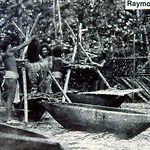
- Title
- Filtering tumerick, Tikopia Island, Raymond Firth photo, 1920s
- Type
- Image
- Date
- 1920s
- Source
- Treadaway
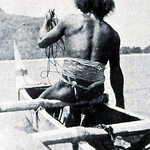
- Title
- Fishing with a line in the lake, Tikopia Island, Raymond Firth photo, 1920s
- Type
- Image
- Date
- 1920s
- Source
- Teadaway
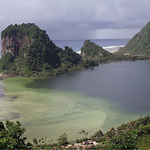
- Title
- Fong Nulu and Fongo Tekoro volcanic rock outcrops, crater lake, Tikopia Island, 2000s
- Type
- Image
- Date
- 1920s
- Source
- Treadaway
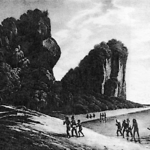
- Title
- Fongo Nuku and Fongo Tekoro volcanic rock outcrops, Tikopia Island, from a 1828 sketch
- Type
- Image
- Date
- 1920s
- Source
- Treadaway
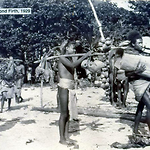
- Title
- Gifts of food and tapa cloth, Tikopia Island, Raymond Firth photo, 1920s
- Type
- Image
- Date
- 2000s
- Source
- Treadaway
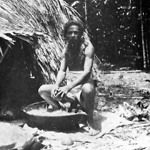
- Title
- Pa Siamano scraping coconuts, Tikopia Island, Raymond Firth photo, 1920s
- Type
- Image
- Date
- 2000s
- Source
- Treadaway
